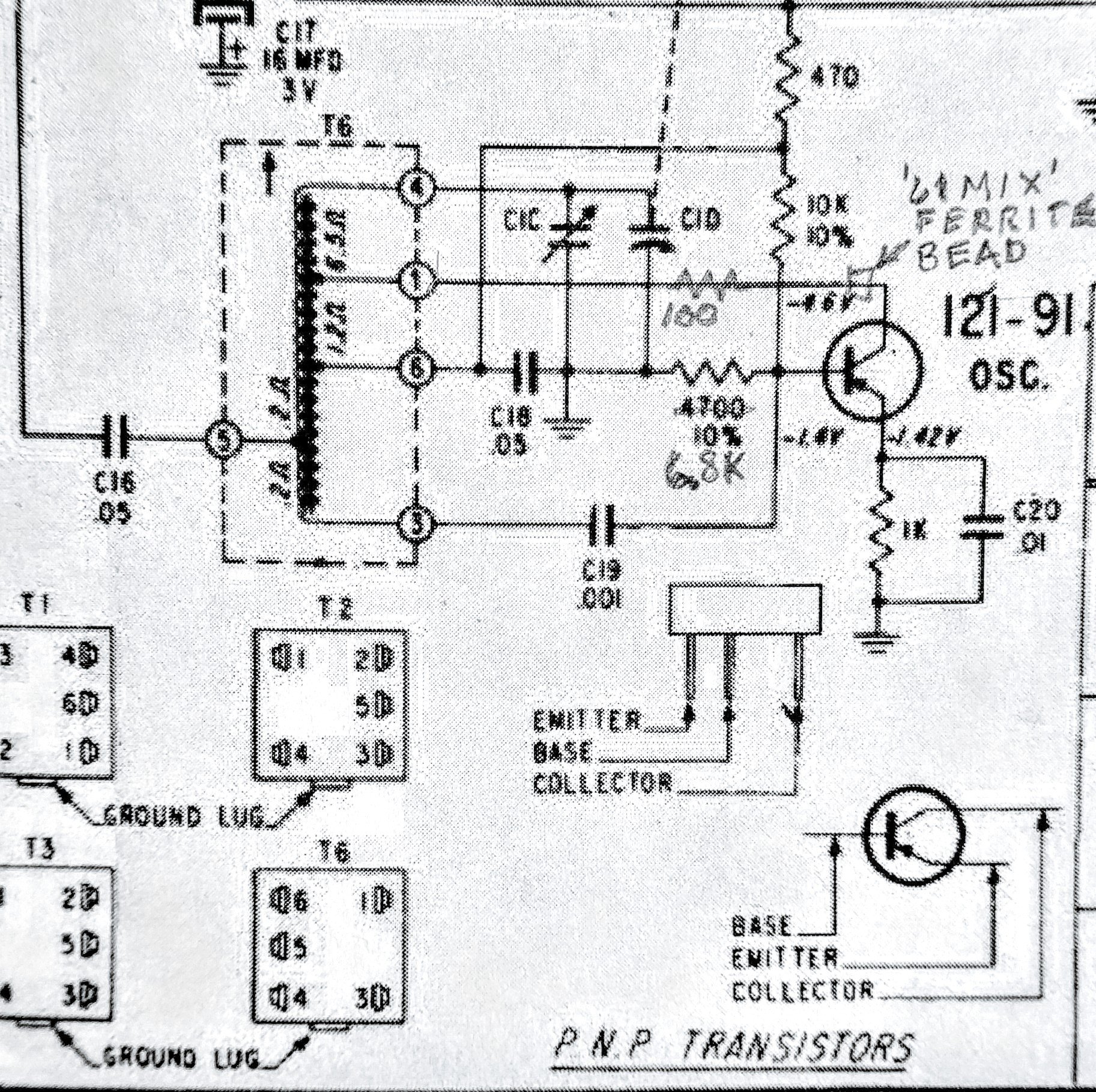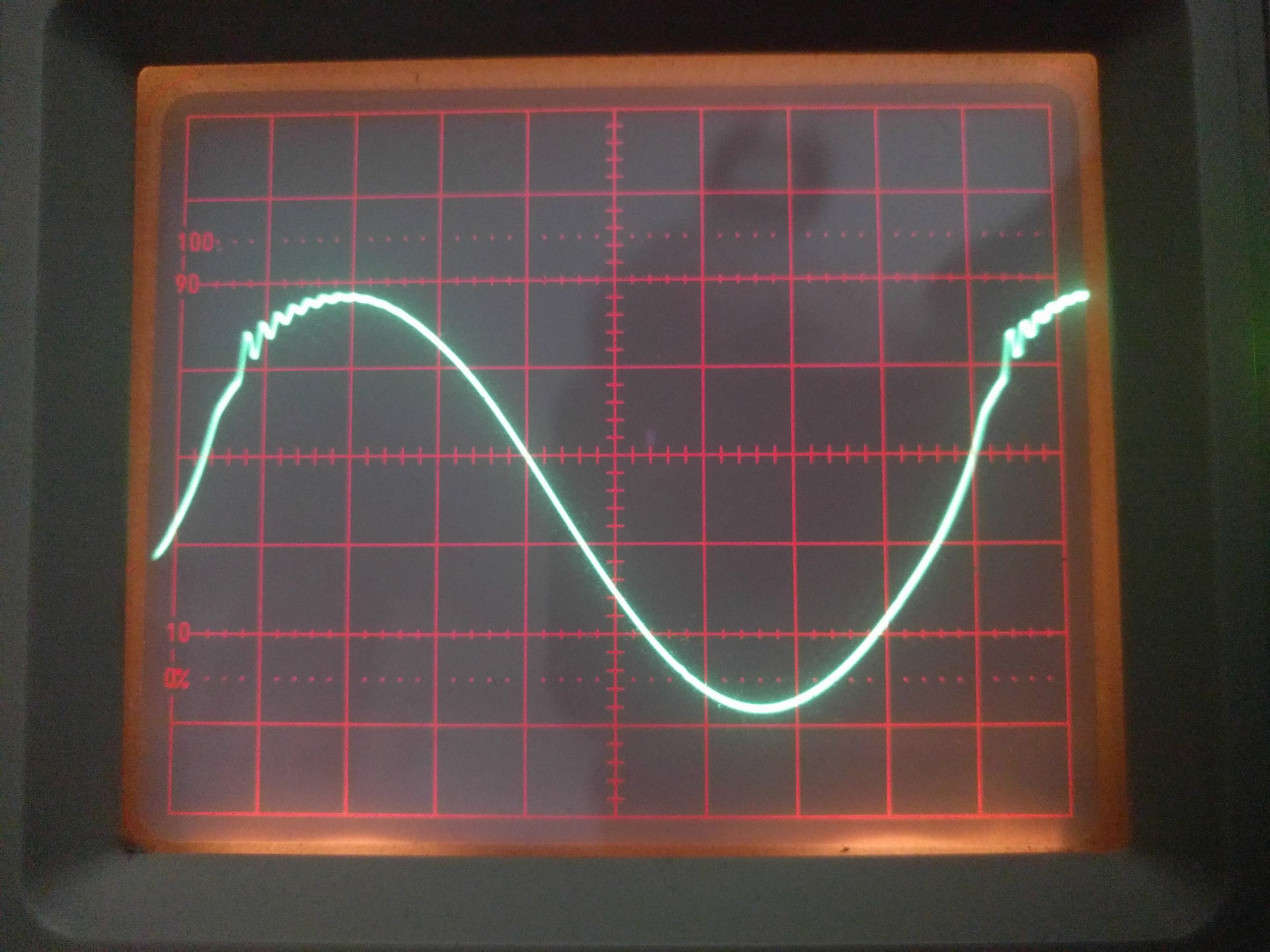I’m thinking of pulling up the end of the 100 ohm and looping the lead a few times through the ferrite bead. If that still doesn’t stop the ringing, I’m thinking about replacing the bead with an RF choke. Every time the ringing is reduced the reception gets better. I checked to see if I had some higher inductance ferrite beads. I found some ’73 mix’ beads and put them in place of the ’61 mix’ beads.

My Zenith Royal 200 conversion to silicon transistors is going slowly. Right now I’m working on getting a good sine wave out of the local oscillator (see photo). The waveform had high frequency parasitic ringing every other cycle. I put a 100 ohm resistor in series with the collector lead and it helped some. I pulled the 2N3906 out of the socket and put a ferrite bead on the collector lead and that helped a bit more. I lifted one end of the 100 ohm and put another ferrite bead on it, and it helped a bit more. At first only a single very strong station was received. Now several more are heard. Before my modifications the sine wave had more ringing than in the photo. The photo was taken after my modifications.












Hey Watson,
Just completed my “home-made” chassis the other day for the “basket-case” Raytheon 8TP-2. Initally used all 2N930 silicon NPN low-noise transistors, but changed the two IF amps to 2N4124 for more stability. After bias tweaking and other debugging, it works very well except for AGC which I might use an OP-amp to correct. Am getting my pictures and report ready to post on ARF soon. What I wanted to ask you is if you totally eliminated the ringing in the Zenith 200 LO ? The Raytheon (Armstrong type)OSC puts out a beautiful, stable signal within tank circuit but at twice the amplitude of original (19V P-P vs. 10V P-P), but the “tickler” and output windings show severe “ringing” on falling side of sine wave even though radio performs well with excellent sensitivity and selectivity. Do you think the higher amplitude might be causing problems due to impedance issues ???
I used the Fair-rite 2673000101 suppressor beads on the collectors, and a 220 ohm resistor in series with the base lead of the LO. It got rid of most of the parasitic oscillations, and reception improved. I did a lot of cutting the traces of the negative supply lines and adding an RF choke in series and a 0.1 uF to common.
One thing I didn’t do was add a resistor in series with – supply. If your LO puts out too high V, it should help to reduce its supply voltage by adding a resistor in series.
The germaniums have hFEs in the 40 to 100 range and lower gain bandwidth and need more positive feedback to oscillate over the AM band. Silicons are so much higher that much less feedback is needed, and if you’re designing the LO coil it would be easy to reduce the turns on the feedback winding. But we don’t want to modify a 50 yr old coil, so the most sensible thing to do is attenuate the feedback. I put a mini 1k trimpot in series with the LO base and adjusted it for a best sine wave given the compromises that were needed to make it good over the whole AM band. I think the resistance I settled on was 220 ohms, but it depends on the changes I had to make to the base bias resistors.